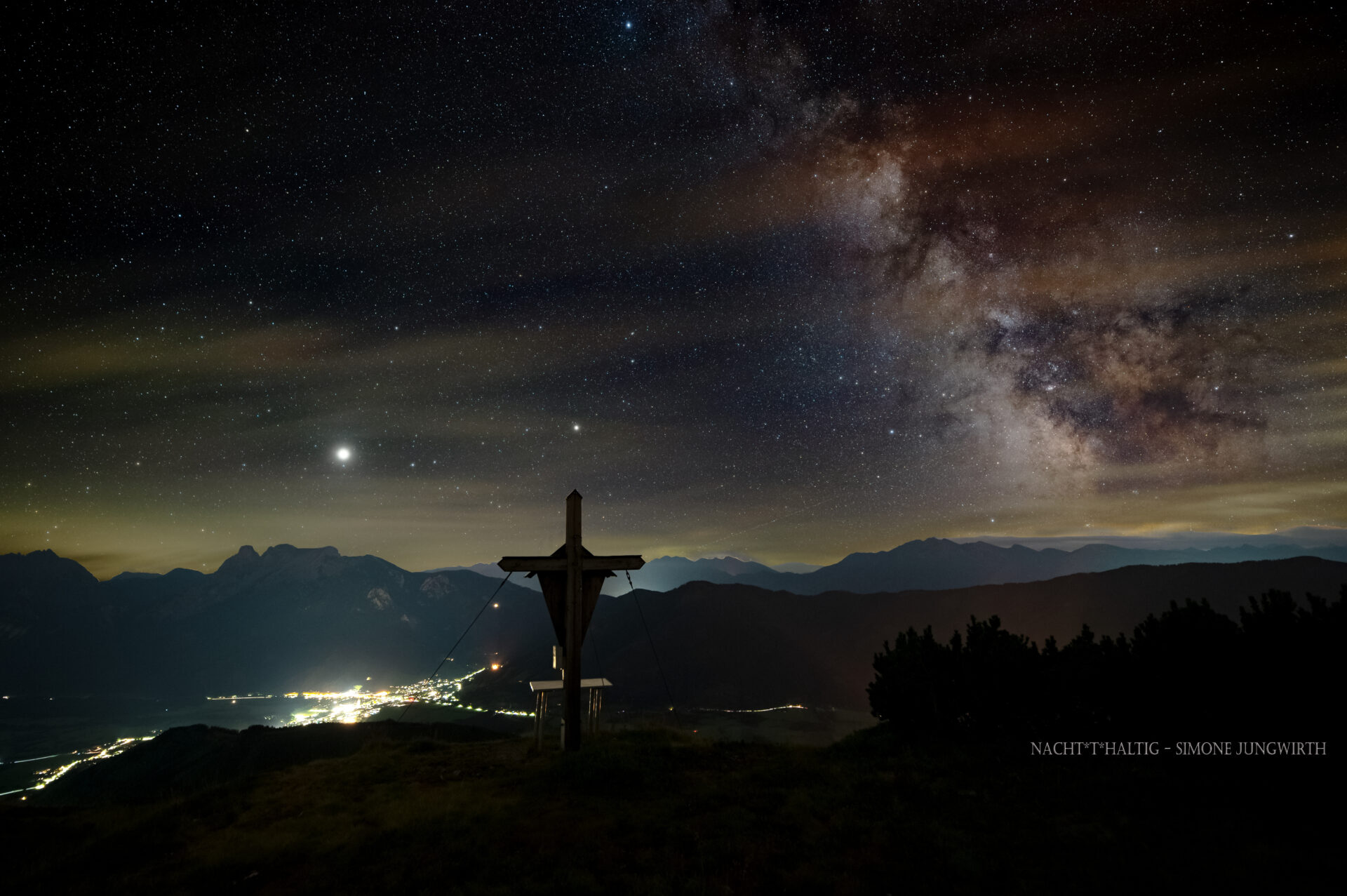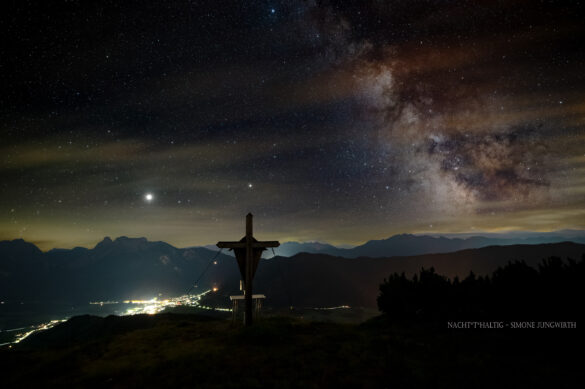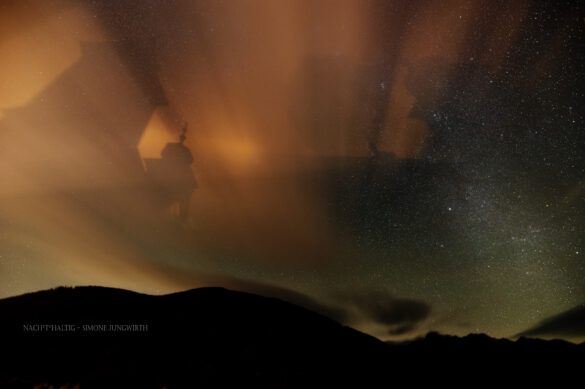By: Simone Jungwirth
(Image Credits: Simone Jungwirth)
I‘ve loved stars since I was a young girl, lying on the ground, eyes on the stars and filled with wonder.
As time went on my starry friends moved a little in the background of my life. Until this one eye- and heart opening night at national park Gesäuse in Styria/Austria.
The Gesäuse is one of Austria’s darkest areas and I joined a guided ‘star tour’ there.
I was fascinated by this pitch-black sky above me, with hundreds and thousands of stars twinkling.
Enchanted by their names and mythological stories, told by our guide.
Standing there, with my feet on the ground and my head in the stars, I knew instantly that I wanted to be able to ‘read‘ the night sky too.
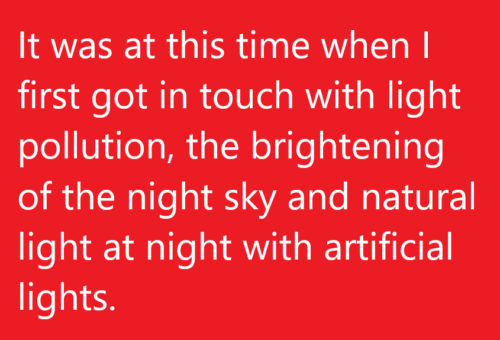
I learned how to do so, combined my fascination for the stars with this for photography and dived deeply into night sky photography.
It was at this time when I first got in touch with light pollution (Lichtvervuiling) , the brightening of the night sky and natural light at night with artificial lights.
I was soaked in by this phenomenon and its wide and severe consequences. 99 per cent of us Europeans live under light polluted skies.
Human’s health, birds, insects, corals, fishes, mammals, trees, and a lot more, are all affected by light pollution.
There is this huge amount of energy waste caused by too much light too. And us losing our night sky, losing the understanding of us human beings, our history and place and belonging in the grand scheme of things.
I started to research a lot about light pollution and wrote a scientific work about it.
And, most important, I started telling people around me about the phenomenon.
It was then when I came to know that most of them don’t know anything about the problem and its consequences.
And I strongly felt this call to act, I felt this wish to inform more and more people about the problem and the (simple) ways to fix is. So, nearly a year ago, I created my account ‘nach*T*haltig’ on Instagram (@nachthaltig).
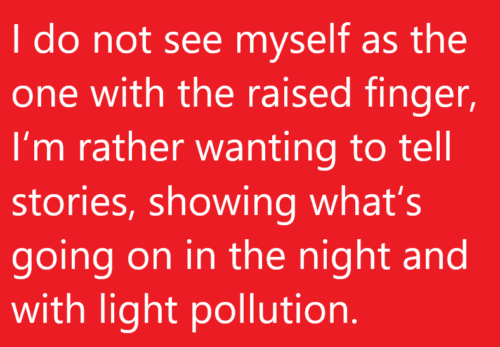
The name is a creation combining the German word nachhaltig – sustainable – and Nacht, night, showing the intent of my account, namely, to be filled with night in an environmental related, sustainable way of thinking.
I do not see myself as the one with the raised finger, I‘m rather wanting to tell stories, showing what‘s going on in the night and with light pollution.
I want to raise awareness and contribute to everyone’s understanding of this problem.
As I always say, what you see once you can no longer see not. In my understanding, seeing and feeling something is the best requirement for taking action in the first place.
And there are a lot of things each and every one can do to reduce light pollution: lights only then and there when and where it is needed (using motions sensor e.g.), using warm light sources (colour temperature about 2700 K or below), shielding lights so they do not shine above the horizontal.
It can be these tiny actions with big effects, if a lot of us do them constantly.
It‘s the fact that consequences of light pollution can be banned immediately if lights were turned off – unless other forms of pollution, where air, soil or water need time to recover – that drives me on and on. And this feeling of deep and profound connection whilst standing under a sky full of stars. It‘s exactly this I wish you and us all with all my heart.
Raising awareness for light pollution
And showing the beauty of the night

